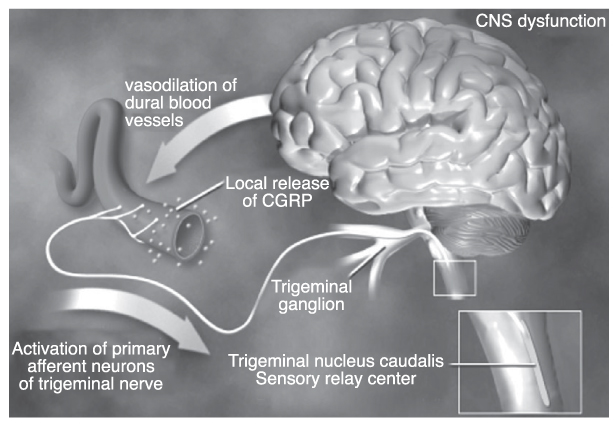J Korean Med Assoc.
2009 May;52(5):500-506. 10.5124/jkma.2009.52.5.500.
The Diagnosis and Most-Updated Therapy of Migraine
- Affiliations
-
- 1Department of Neurology, The Catholic University of Korea College of Medicine, Korea. ks1007@catholic.ac.kr
- KMID: 2188016
- DOI: http://doi.org/10.5124/jkma.2009.52.5.500
Abstract
- Migraine is a very common headache disorder. The international headache society subdivides migraine into the ones with and without aura. The migraine attack can consist of premonitory, aura, headache, and resolution phases. Diagnosis is based on the characteristics of headache and associated symptoms. There are many abortive and preventive migraine treatments. Abortive treatment is either specific for the disease or nonspecific such as analgesics. The migraine specific therapies are representative of new migraine abortive medications, which act as serotonin agonist-triptan and ergot. Stratified care and early treatment are also cost-effective. Increased headache frequency is an indication for a preventive treatment. Preventive treatment decreases migraine frequency and improves quality of life. More treatments are being developed. Several new treatments are reviewed in this article.
Keyword
MeSH Terms
Figure
Cited by 1 articles
-
Dizziness and orthostatic intolerance in pediatric migraine
Seung Hyo Kim
J Korean Med Assoc. 2017;60(2):126-133. doi: 10.5124/jkma.2017.60.2.126.
Reference
-
1. Lipton RB, Stewart WF, Von Korff M. Burden of migraine: Societal costs and therapeutic opportunities. Neurology. 1997. 48(S3):S4–S9.
Article2. Headache classification committee of the international headache society. Classification and diagnostic criteria for headche disorders, cranial neuralgia, and facial pain. Cephalagia. 1988. 8:1–96.3. Headache classification committee. The international classification of Headache disorders, 2nd edition. Cephalagia. 2004. 24:1–160.4. Graham JR, Wolff HG. Mechanism of migraine headache and action of ergotamine tartate. Arch Neurol Psychiatry. 1938. 39:737–763.5. The guideline of migraine. korean J Headache. 2008. 2nd ed. Seoul: 1–97.6. Kim BK. Pathophysiological basis of migraine therapy. Korean J Headache. 2005. 6:6–13.7. Silberstein SD. Migraine The Lancet. 2004. 363:381–391.8. Filippi M, Rocca MA. Headche and migraine. Neurol Sci. 2008. 29:S336–S338.9. Moon HS. Acute treatment of migraine:triptans and beyond. Korean J headache. 2005. 6:14–20.10. Aguggia M. Treating headaches with botulinum toxin. Neurol Sci. 2008. 29:S137–S139.
Article


